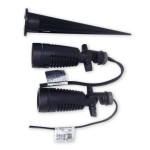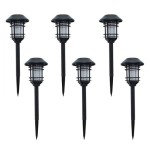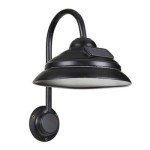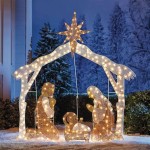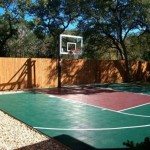Best Bulbs For Outdoor Pot Lights: A Comprehensive Guide
Outdoor pot lights, also known as recessed lighting, are a versatile and effective way to illuminate exterior spaces. They enhance safety, highlight architectural features, and create ambiance. Selecting the appropriate bulb is crucial for achieving the desired lighting effect and ensuring energy efficiency and longevity. This article provides a detailed guide to the best bulb options for outdoor pot lights, considering factors such as light output, color temperature, energy consumption, and durability.
Understanding the Requirements of Outdoor Pot Lights
Before delving into specific bulb types, it's important to understand the unique demands placed on outdoor lighting. These lights are exposed to the elements, including rain, snow, extreme temperatures, and UV radiation. Therefore, bulbs designed for outdoor use must be robust and weather-resistant. Look for bulbs explicitly rated for outdoor or wet locations, often indicated by a "damp-rated" or "wet-rated" designation. Furthermore, the fixture itself should be designed for outdoor use, with proper seals to prevent water ingress. Selecting a bulb with a suitable beam angle is also important. A narrow beam angle is ideal for highlighting specific features, while a wider beam angle provides broader illumination.
The desired level of brightness, measured in lumens, will influence bulb selection. For general ambient lighting, a lower lumen output may suffice, while highlighting pathways or architectural details may require brighter bulbs. Color temperature, measured in Kelvin (K), affects the perceived warmth or coolness of the light. Warmer color temperatures (2700K-3000K) create a cozy and inviting atmosphere, while cooler color temperatures (4000K-5000K) offer a brighter, more energizing light.
Exploring Bulb Types: LED
Light-emitting diodes (LEDs) have emerged as the dominant technology for outdoor pot lights, owing to their numerous advantages. LEDs are highly energy-efficient, consuming significantly less electricity than traditional incandescent or halogen bulbs. This translates to lower energy bills and a reduced environmental footprint. Furthermore, LEDs boast an exceptionally long lifespan, often lasting tens of thousands of hours. This minimizes the need for frequent replacements, reducing maintenance costs and inconvenience.
LEDs are available in a wide range of color temperatures and lumen outputs, providing flexibility in achieving the desired lighting effect. They are also instant-on, reaching full brightness immediately without any warm-up time. Unlike some other bulb types, LEDs do not contain mercury or other hazardous materials, making them environmentally friendly. Many LED bulbs are also dimmable, allowing for further control over light intensity and energy consumption.
When selecting LED bulbs for outdoor pot lights, it's crucial to choose those specifically designed for outdoor use. These bulbs are typically enclosed in a weatherproof housing to protect the internal components from moisture and dust. Look for LED bulbs with a high Color Rendering Index (CRI), which indicates the accuracy with which the bulb renders colors. A CRI of 80 or higher is generally recommended for outdoor lighting.
Different types of LED bulbs exist, each with its own characteristics. Integrated LED fixtures combine the light source and the fixture housing into a single unit. These fixtures offer excellent durability and weather resistance. Retrofit LED bulbs are designed to replace existing incandescent or halogen bulbs in compatible fixtures. These bulbs are a cost-effective way to upgrade to LED technology without replacing the entire fixture.
Consider the beam angle of the LED bulb. Narrow beam angles are suitable for spotlighting, while wider beam angles provide more general illumination. Pay attention to the lumen output to ensure adequate brightness for the intended application. Dimmable LED bulbs offer added versatility in controlling the light intensity and creating different lighting moods.
Examining Bulb Types: Halogen
Halogen bulbs are an older technology that still finds some use in outdoor pot lights, though they are increasingly being replaced by LEDs. Halogen bulbs offer a bright, white light that accurately renders colors. They are also relatively inexpensive compared to LED bulbs.
However, halogen bulbs are significantly less energy-efficient than LEDs, consuming more electricity to produce the same amount of light. They also have a shorter lifespan, requiring more frequent replacements. Halogen bulbs generate a significant amount of heat, which can be a safety concern, especially in enclosed spaces. They also contain pressurized gas and should be handled with care. Furthermore, some halogen bulbs may be phased out due to energy efficiency regulations.
When using halogen bulbs in outdoor pot lights, ensure that the fixture is rated for the wattage of the bulb. Overheating can damage the fixture and pose a fire hazard. Choose halogen bulbs specifically designed for outdoor use, with a protective coating to shield them from the elements. Regular inspection and maintenance are essential to ensure safe and reliable operation.
Diving into Bulb Types: Incandescent
Incandescent bulbs are the oldest type of electric light and are rarely used in outdoor pot lights due to their inherent inefficiencies. Incandescent bulbs produce light by heating a filament until it glows. This process is highly inefficient, with most of the energy being converted into heat rather than light. Incandescent bulbs have a short lifespan, requiring frequent replacements. They are also fragile and susceptible to damage from vibrations and impacts.
While incandescent bulbs offer a warm, inviting light, their energy consumption and short lifespan make them an impractical choice for outdoor lighting. They are also being phased out in many regions due to energy efficiency regulations.
Using incandescent bulbs in outdoor pot lights is generally not recommended. If they are used, ensure that the fixture is rated for the wattage of the bulb and that the bulb is protected from the elements. Regular inspection and maintenance are crucial.
Considerations for Specific Applications
The choice of bulb for outdoor pot lights depends on the specific application. For pathway lighting, a lower lumen output and a wider beam angle are typically preferred. This creates a soft, even illumination that guides pedestrians safely without being overly bright or glaring. Warmer color temperatures (2700K-3000K) create a welcoming and inviting atmosphere.
For highlighting architectural features, a higher lumen output and a narrower beam angle may be desirable. This creates a dramatic effect, accentuating the details of the building. Cooler color temperatures (4000K-5000K) can enhance the contrast and clarity of the illuminated features.
For security lighting, a high lumen output and a wide beam angle are essential. This provides broad illumination that deters intruders and enhances visibility. Motion-activated sensors can further enhance the effectiveness of security lighting.
For landscape lighting, consider the type of plants and foliage being illuminated. Warmer color temperatures are generally preferred for highlighting greenery, while cooler color temperatures can enhance the beauty of flowers. Avoid using excessively bright lights that can disrupt the natural environment.
Installation and Maintenance Tips
Before installing or replacing bulbs in outdoor pot lights, always disconnect the power supply to prevent electric shock. Ensure that the new bulb is compatible with the fixture in terms of wattage and voltage. Follow the manufacturer's instructions for installation.
Regularly inspect the fixtures for any signs of damage or deterioration. Clean the lenses or reflectors to maintain optimal light output. Check the wiring and connections for any loose or corroded connections. Replace any damaged or worn components promptly.
Consider using a timer or photocell to automatically turn the lights on and off. This can save energy and extend the lifespan of the bulbs. Choose a timer or photocell that is specifically designed for outdoor use.
During periods of inclement weather, such as heavy rain or snow, it may be necessary to temporarily turn off the outdoor pot lights to prevent damage to the bulbs and fixtures.
Dispose of used bulbs properly. Incandescent and halogen bulbs can be disposed of in the regular trash. LED bulbs should be recycled at a designated recycling center.
Choosing the best bulbs for outdoor pot lights involves careful consideration of factors such as energy efficiency, lifespan, light output, color temperature, and application. By understanding these factors and selecting the appropriate bulb type, homeowners can create a safe, attractive, and energy-efficient outdoor lighting system.

What Is The Best Led Color Temperature For Outdoor Lighting

Choose The Best Color Temperature For Your Outdoor Lighting Knowledge Base Super Bright Leds

The 3 Best Smart Outdoor Lights For Backyards Of 2024 Reviews By Wirecutter

Best Color Temperature For Outdoor Lighting Enhanced

The 3 Best Smart Outdoor Lights For Backyards Of 2024 Reviews By Wirecutter

Outdoor Lighting Guide Lowe S

Exterior Led Pot Lights

Can Led Lights Be Used Outdoors Bpm Electric

Outdoor Recessed Lighting Guide Tutor

The 3 Best Led Light Bulbs Of 2024 Reviews By Wirecutter
Related Posts
